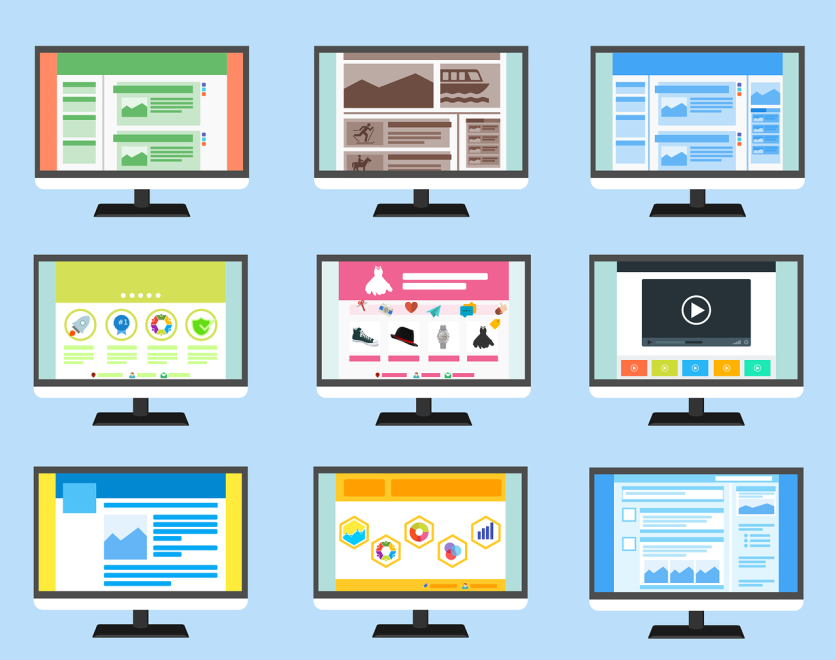
Web design has always been a subject of evolution. As the internet continues to give way to new technologies, emphasis is laid on staying updated with the surging trends in web designing circles.
A surging trend that picks critical acclaim amongst users turns into a 'viral hit' within no time.
Investing time and effort into exploring the ever-streaming trends unleashed by talented designers worldwide every day can prove incredibly beneficial—not only does this boost one's innovative juices, but it helps in keeping up with what users are currently fascinated about, too!
This blog takes readers through five of the most followed developments in web designing, ranging from minimalistic designs to integrating 3D elements and bold typography.
It will surely drive website creators to remain involved with the latest web design trends, staying invested and relevant.
1. Minimalistic Design
Minimalistic design is where components are stripped down to the bare minimum, creating attractive yet simple user interfaces.
It has been growing in popularity and usability as one of the major viral web design trends today.
Classics, including Apple, OPPO, and Porche, are among well-known companies that have implemented this trend, as seen in their website designs.
Its focus on simplified elements prioritizes user engagement by avoiding unnecessary visual distractions while delivering value under minimalist controls.
To successfully integrate minimalism into your website design requires knowledge of its fundamental principles, which include clean aesthetic lines, intentional whitespace for emphasis, effective use of color palettes, etc., all in synchronization with each other to enhance the overall experience.
A New York City web design firm can help you create a simple yet memorable website. They are experienced in delivering sites that sync with the customer's brand strategy and messaging while creating an environment of accessibility for users.
Skilled teams also measure online experiences against expectations to ensure they are created with ease of use in mind. They do this by A/B testing layouts for maximum social engagement before payment securely goes through.
2. Dark Mode
Dark mode is a popular and growing trend in web design, allowing websites to adopt something that's different from the common white or light background look.
Dark mode can bring out more emotion in content by changing visual tone and providing contrast between text, graphics, images, etc.
It's also easier on the eyes for users who may have difficulty reading websites with more dominant colors.
Websites can change settings based on user preferences if they detect preferences like dark mode enabled on the user's device.
This helps negate fatigue associated with looking at bright screens for long periods of time while also being energy efficient at night times when visibility significantly decreases due to darkness outside.
3. Micro-interactions
Micro-interactions are small, interactive design moments that captivate users. They provide both visual and audible feedback in response to user-initiated actions, such as hovering over an image or button.
Popular web applications, such as Gmail and Google Maps, employ micro-interactions to reinforce essential interactions with the interface.
Through intuitive animations and sounds, websites can elevate user experience with proper usage of micro-interactions, which also facilitates smoother transitions along pages or sections of a website.
In addition, they may help frame context without heavy visual elements on the screen, hence helping focus attention sharply on calls to action for conversions.
Overall, with effective use of micro-interactions, designers troubleshoot when it comes to accessibility issues productively while engaged users ultimately benefit from the speed adjustment to the product.
4. 3D Elements
The use of 3D elements in web design adds layers of depth and movement to various visuals that make pages more enticing and interesting for viewers.
As an increasingly popular trend, websites incorporate 3D elements to create unique user experiences with effective interactive features, animations, stunning images, and realistic interfaces.
Apart from its aesthetical value, this advanced technology destroys the barrier between traditional internet interfaces, seamlessly merging physical and digital worlds so users can truly feel part of a dynamic virtual environment.
Strategies need to be incorporated when deciding to implement these designs, as improper execution could distract your website visitors. There are also numerous low-code and no-code options for novices, making it less difficult to implement robust designs without technical know-how.
5. Bold Typography
Bold typesetting has been embraced by leading brand websites because its fundamental effect is to draw users' attention with its unique visuals.
Such a powerful combination can also emphasize informative headings, as well as serve to clearly differentiate components between messages or subsections—without relying on product imagery or other visual graphics.
Bold typography undeniably offers an additional level of user engagement, all while creating a distinct brand identity for lasting impact and recall.
When considering this option, the important point is to be conscious about where, when, and how fonts are used as visible distinction still needs clarity and symmetry for optimal composition within digital space limitations.
Conclusion
Web design trends can significantly impact the user engagement and overall success of a website. It is important for web developers and companies to keep up with the viral trends in order to stay at the top of their game.
In this blog post, we discussed several current trends: minimalistic design, dark mode, micro-interactions, 3D elements, and bold typography.
From minimalist bliss with lots of white space to showstopping fonts for more personality—there are plenty of aesthetic options available to choose from when customizing your company's website.
Seeking out creativity within budgetary limitations can be challenging, but taking risks casts remarkable rewards as they make even day-to-day interactions feel fresh and modulate user attention and how websites are remembered.




